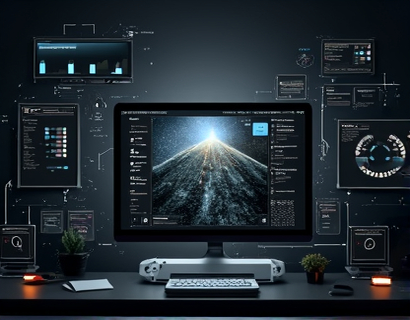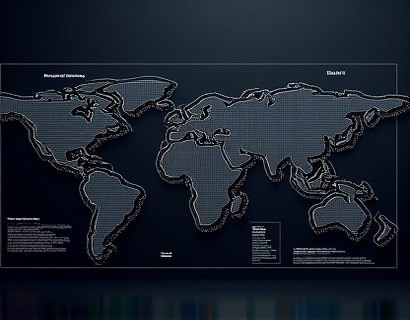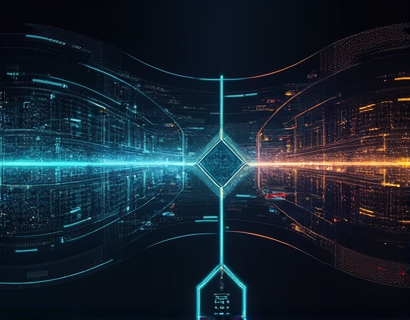Transforming Construction Project Management with AI Chat Interfaces
In the rapidly evolving landscape of construction and project management, the integration of artificial intelligence (AI) chat interfaces is revolutionizing the way professionals access expert insights and manage projects. These advanced tools provide instant, reliable information on build services, industry trends, and essential knowledge, significantly enhancing workflow efficiency and decision-making processes. This article delves into the transformative impact of AI chat interfaces in construction, highlighting how they are reshaping the industry for the better.
Enhancing Decision-Making with Real-Time Insights
The core advantage of AI chat interfaces in construction project management lies in their ability to deliver real-time expert insights. Traditional methods of gathering information, such as manual research and consultations with human experts, can be time-consuming and often lead to delays. With an AI chat interface, users can instantly receive up-to-date information on various aspects of construction projects, from material sourcing and cost estimation to regulatory compliance and safety standards. This immediacy ensures that decisions are made based on the most current data, reducing the risk of errors and optimizing project outcomes.
Streamlining Workflow Efficiency
Efficiency is paramount in construction project management, where time and resource optimization can significantly impact project success. AI chat interfaces streamline workflows by automating routine tasks and providing quick answers to complex queries. For instance, project managers can use these interfaces to rapidly obtain specifications for build services, compare quotes from different suppliers, and assess the feasibility of project timelines. By automating these processes, AI chat interfaces free up valuable time for project managers, allowing them to focus on strategic decision-making and high-value tasks.
Access to Expert Knowledge
One of the most significant benefits of AI chat interfaces is their ability to bridge the gap between project managers and industry experts. These interfaces are designed to simulate conversations with seasoned professionals, offering insights that might otherwise be difficult to obtain. Users can ask detailed questions about construction techniques, best practices, and emerging technologies, receiving comprehensive answers that reflect the latest industry knowledge. This democratization of expert knowledge ensures that all project team members, regardless of their experience level, have access to high-quality information, fostering a more informed and collaborative work environment.
Improving Communication and Collaboration
Effective communication and collaboration are critical components of successful construction projects. AI chat interfaces enhance these aspects by providing a centralized platform for information exchange. Project stakeholders can use these interfaces to ask questions, share updates, and receive feedback in real-time, ensuring that everyone is on the same page. This constant flow of information helps to mitigate misunderstandings and miscommunications, which are common sources of project delays and cost overruns. By facilitating seamless communication, AI chat interfaces contribute to smoother project execution and better team dynamics.
Enhancing Safety and Compliance
Safety and compliance are non-negotiable aspects of construction project management. AI chat interfaces play a crucial role in ensuring that projects adhere to the highest safety standards and regulatory requirements. Users can query the interfaces for the latest safety protocols, building codes, and environmental regulations, receiving clear and concise guidance. This immediate access to critical information helps project managers and workers stay compliant, reducing the risk of accidents and legal issues. Moreover, AI chat interfaces can integrate with other safety management tools, creating a comprehensive system for monitoring and enforcing safety measures throughout the project lifecycle.
Supporting Sustainable Practices
The construction industry is increasingly focused on sustainability, with a growing emphasis on eco-friendly materials, energy-efficient designs, and minimal environmental impact. AI chat interfaces support these efforts by providing insights into sustainable construction practices and materials. Users can ask about the environmental impact of different building materials, explore green building certifications, and learn about innovative technologies that promote sustainability. By integrating sustainability considerations into the project management process, AI chat interfaces help construction professionals make environmentally responsible decisions, aligning with global efforts to reduce carbon footprints and promote sustainable development.
Personalized User Experiences
The design of AI chat interfaces is user-centric, tailored to meet the specific needs of construction professionals and project managers. These interfaces use advanced natural language processing (NLP) and machine learning algorithms to understand user queries and provide personalized responses. Whether a user is a seasoned project manager or a junior engineer, the AI chat interface adapts to their level of expertise, offering relevant and actionable information. This personalized approach enhances user satisfaction and ensures that the information provided is always aligned with the user's requirements.
Integration with Existing Systems
To maximize their effectiveness, AI chat interfaces are designed to integrate seamlessly with existing project management tools and software. This integration allows for a cohesive workflow, where information from various sources is consolidated and made accessible through a single, intuitive interface. Users can link their project management software, CAD tools, and other relevant platforms, ensuring that data is up-to-date and consistent across all systems. This interconnected approach not only improves efficiency but also reduces the risk of data silos and information discrepancies.
Case Studies and Real-World Applications
The benefits of AI chat interfaces in construction project management are not theoretical; they are being realized in real-world projects. For example, a large construction firm implemented an AI chat interface to manage a complex urban redevelopment project. The interface provided real-time insights on material availability, cost estimates, and regulatory compliance, significantly reducing the project's timeline and budget overruns. Another instance involved a mid-sized contractor who used the AI chat interface to optimize resource allocation and improve site safety, leading to a 20% increase in project completion rates and a notable reduction in safety incidents.
Challenges and Future Directions
While AI chat interfaces offer numerous advantages, there are challenges to consider. One key challenge is ensuring the accuracy and reliability of the information provided. AI systems must be continuously trained and updated to reflect the latest industry standards and best practices. Additionally, there is a need for robust security measures to protect sensitive project data and user privacy. Looking ahead, the future of AI chat interfaces in construction is promising, with advancements in AI technology likely to enhance their capabilities further. Integration with IoT devices, predictive analytics, and augmented reality could open new avenues for innovation, making construction project management even more efficient and insightful.
Conclusion
The integration of AI chat interfaces in construction project management represents a significant leap forward in the industry. By providing instant expert insights, streamlining workflows, and enhancing decision-making, these tools are transforming the way construction projects are managed. As the technology continues to evolve, the potential for further improvements and innovations is vast. Construction professionals and project managers who embrace AI chat interfaces will be better equipped to navigate the complexities of modern construction, ensuring successful project delivery and sustained industry growth.









































